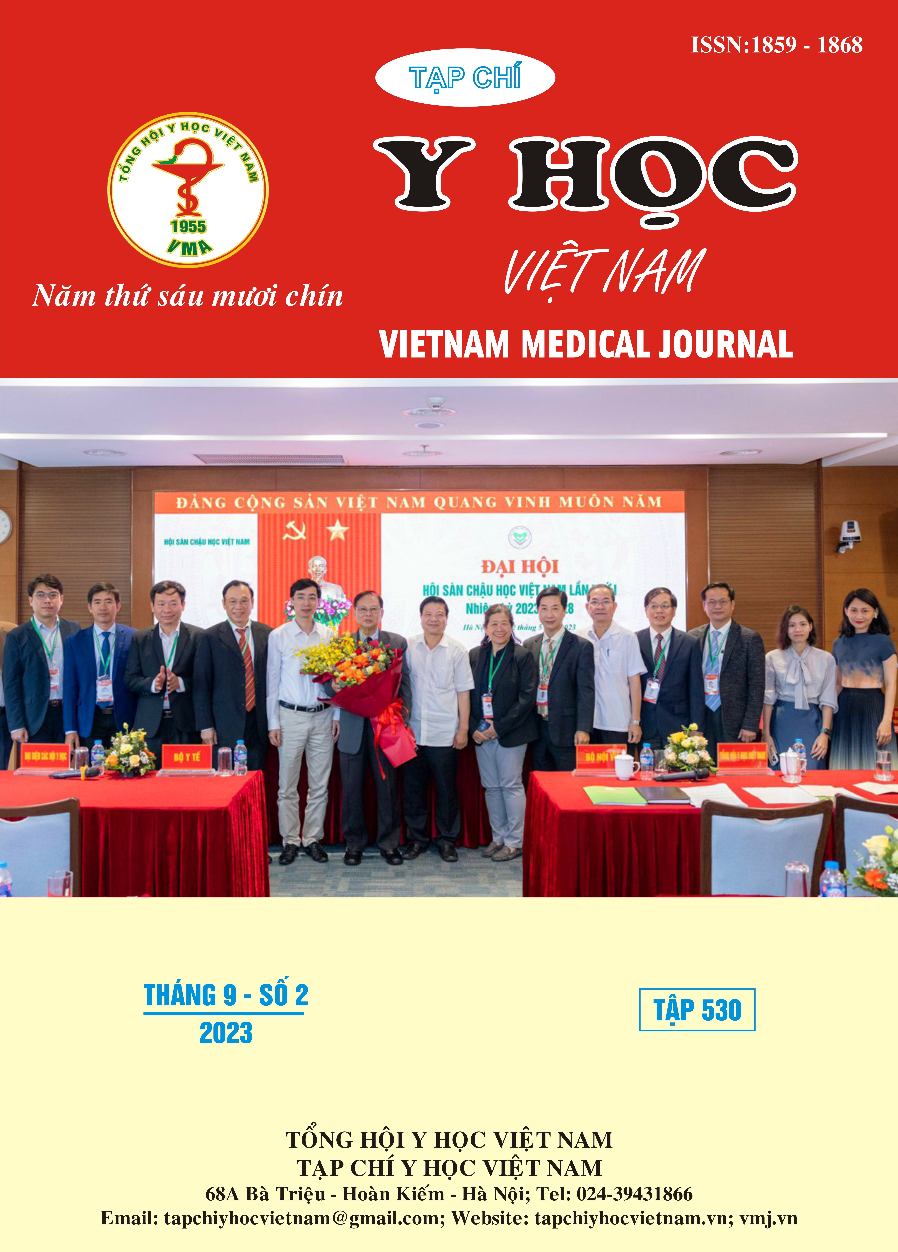NGHIÊN CỨU MỘT SỐ CHỈ SỐ XÉT NGHIỆM CỦA BỆNH NHÂN ĐA U TUỶ XƯƠNG CHUỖI NHẸ TẠI BỆNH VIỆN BẠCH MAI
Nội dung chính của bài viết
Tóm tắt
Đặt vấn đề: Đa u tuỷ xương chuỗi nhẹ (LCMM) chiếm khoảng 15-20% bệnh nhân đa u tuỷ, có tiên lượng xấu, đáp ứng điều trị kém hơn so với các nhóm khác, khó phát hiện sớm ở các bệnh viện không phải tuyến chuyên khoa, bệnh nhân thường được chẩn đoán bệnh muộn có nhiều biến chứng (thiếu máu, suy thận, loãng xương). Để chẩn đoán sớm và kịp thời, các nghiên cứu về đặc điểm các xét nghiệm cơ bản thường gặp của bệnh nhân mắc LCMM là vô cùng cần thiết. Mục tiêu: nghiên cứu một số chỉ số xét nghiệm của bệnh nhân LCMM đến khám và điều trị tại Bệnh viện Bạch Mai. Đối tượng, phương pháp nghiên cứu: Nghiên cứu mô tả cắt ngang trên 50 bệnh nhân mới chẩn đoán LCMM từ 01/2018 đến 07/2022, điều trị tại Bệnh viện Bạch Mai. Kết quả: Bệnh nhân LCMM có biểu hiện tăng protein máu, giảm albumin máu, và chỉ số A/G đảo ngược tỷ lệ thấp, lần lượt là 2%, 8% và 16%. Tỷ lệ bệnh nhân tăng beta-2-microglobulin chiếm 82%. Tỷ lệ bệnh nhân có chỉ số LDH bình thường chiếm 96%. Tỷ lệ bệnh nhân có chỉ số Calci toàn phần bình thường chiếm 82%. Kết luận: Các xét nghiệm của bệnh nhân LCMM có biểu hiện tăng protein máu và beta-2-microglobulin, giảm albumin máu, chỉ số A/G đảo ngược tỷ lệ thấp, LDH và Calci toàn phần bình thường.
Chi tiết bài viết
Từ khóa
Đa u tuỷ xương chuỗi nhẹ, LCMM, xét nghiệm.
Tài liệu tham khảo
2. Vương Sơn Thành, “Nghiên cứu đặc điểm tế bào và mô bệnh học tủy xương ở bệnh nhân đa u tủy xương tại khoa Huyết học- Truyền máu bệnh viện Bạch Mai.” Luận văn bác sĩ chuyên khoa II, Đại học Y Hà Nội, 2017.
3. Nguyễn Lan Phương, “Nghiên cứu đặc điểm lâm sàng và xét nghiệm của bệnh đa u tủy xương chuỗi nhẹ tại viện Huyết học- Truyền máu trung ương.” Đề tài cấp cơ sở, Viện Huyết học- Truyền máu trung ương, 2016.
4. Nguyễn Thùy Dương, “Nghiên cứu đặc điểm lâm sàng, cận lâm sàng và kết qủa điều trị trong bệnh đa u tủy xương chuỗi nhẹ tại viện Huyết hoc- Truyền máu trung ương.” Luận văn thạc sĩ y học, Đại học Y Hà Nội, 2018.
5. R. A. Kyle et al., “Review of 1027 patients with newly diagnosed multiple myeloma,” Mayo Clin Proc, vol. 78, no. 1, pp. 21–33, Jan. 2003, doi: 10.4065/78.1.21.
6. Suzanne MCB Thanh Thanh, “Đánh giá đáp ứng điều trị và chức năng thận của phác đồ có Bortezomib trong bệnh đa u tuỷ xương.” Luận án tiến sĩ y học, Đại học Y Dược Thành phố Hồ Chí Minh, 2016.
7. Nguyễn Thị Nga, “Đặc điểm bất thường nhiễm sắc thể và kết quả điều trị bệnh đa u tủy xương có suy thận giai đoạn 2018- 2021.” Luận văn thạc sĩ y học, Đại học Y Hà Nội, 2021.
8. H. Ü. Teke, M. Başak, D. Teke, and M. Kanbay, “Serum Level of Lactate Dehydrogenase is a Useful Clinical Marker to Monitor Progressive Multiple Myeloma Diseases: A Case Report,” Turk J Haematol, vol. 31, no. 1, pp. 84–87, Mar. 2014, doi: 10.4274/Tjh.2013.0044.


